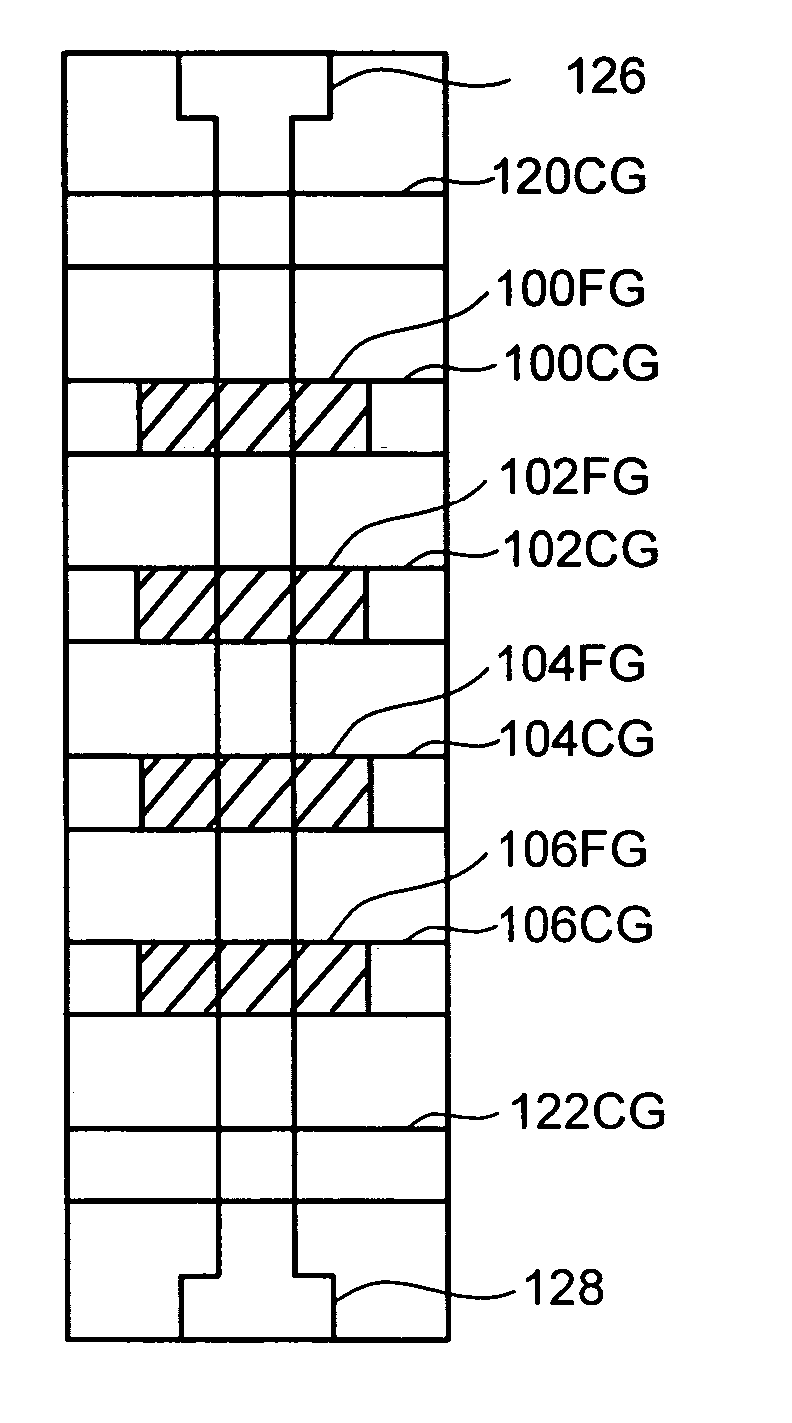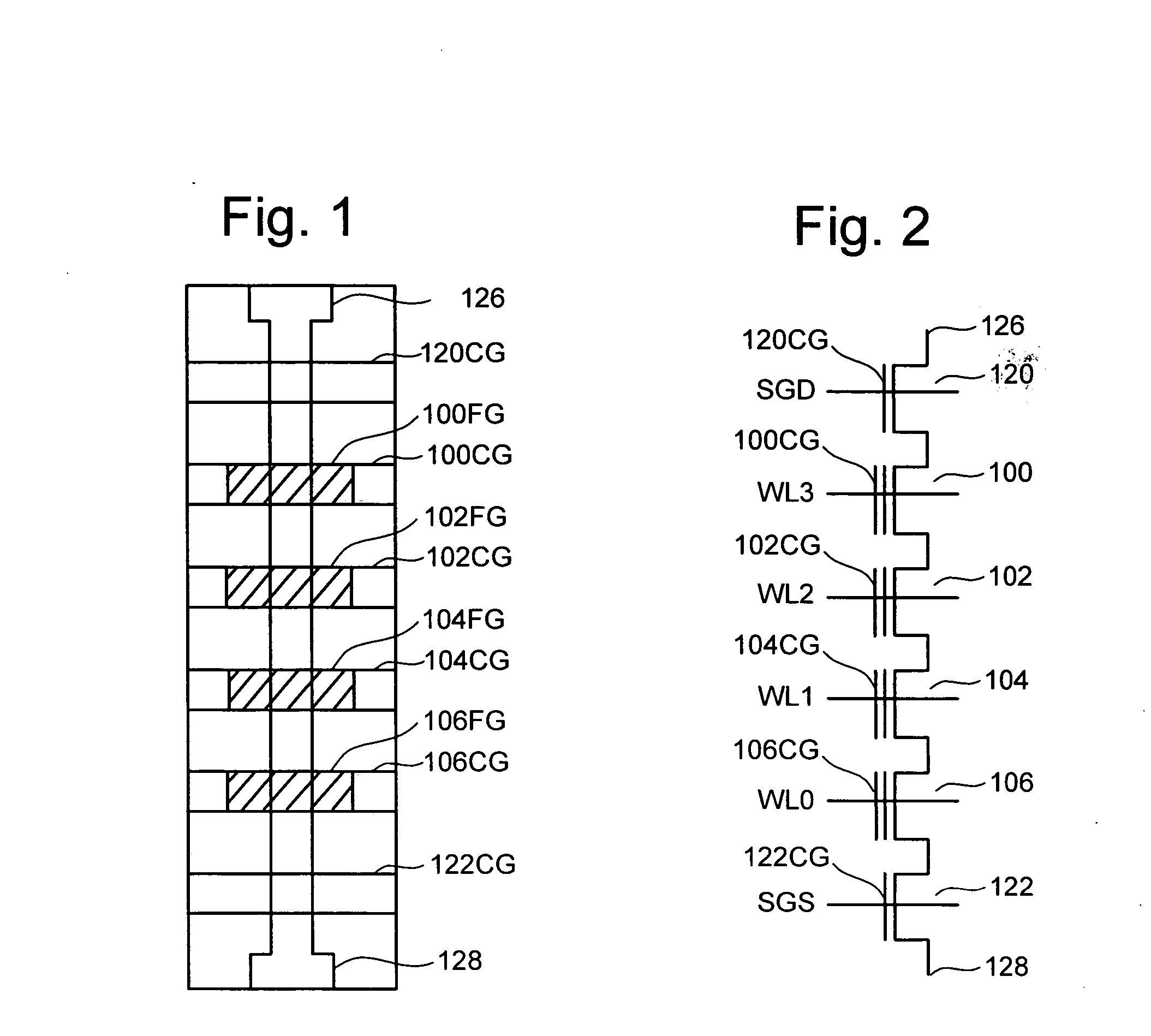Self-aligned trench filling with high coupling ratio
a trench filling and high coupling ratio technology, applied in the field of high density semiconductor devices, can solve the problems of stress and ultimately defects in silicon, the space available for isolating devices tends to decrease, and the parasitic current and charge of inter-devices can become more problematic, so as to achieve greater width and depth.
- Summary
- Abstract
- Description
- Claims
- Application Information
AI Technical Summary
Benefits of technology
Problems solved by technology
Method used
Image
Examples
Embodiment Construction
[0025]FIG. 1 is a top view showing one NAND string. FIG. 2 is an equivalent circuit thereof. Trench isolation techniques in accordance with embodiments are presented with respect to nonvolatile flash memory and NAND type memory for purposes of explanation. It will be appreciated by those of oridinary skill in the art, however, that the techniques set forth are not so limited and can be utilized in many fabrication processes to fabricate various types of integrated circuits.
[0026] The NAND string depicted in FIGS. 1 and 2 includes four transistors 100, 102, 104 and 106 in series and sandwiched between a first select gate 120 and a second select gate 122. Select gate 120 connects the NAND string to bit line 126. Select gate 122 connects the NAND string to source line 128. Each of the transistors 100, 102, 104 and 106 includes a control gate and a floating gate. For example, transistor 100 has control gate 100CG and floating gate 100FG. Transistor 102 includes control gate 102CG and a...
PUM
 Login to View More
Login to View More Abstract
Description
Claims
Application Information
 Login to View More
Login to View More - R&D
- Intellectual Property
- Life Sciences
- Materials
- Tech Scout
- Unparalleled Data Quality
- Higher Quality Content
- 60% Fewer Hallucinations
Browse by: Latest US Patents, China's latest patents, Technical Efficacy Thesaurus, Application Domain, Technology Topic, Popular Technical Reports.
© 2025 PatSnap. All rights reserved.Legal|Privacy policy|Modern Slavery Act Transparency Statement|Sitemap|About US| Contact US: help@patsnap.com



